#Quetzalcoatlus Northropi
Text
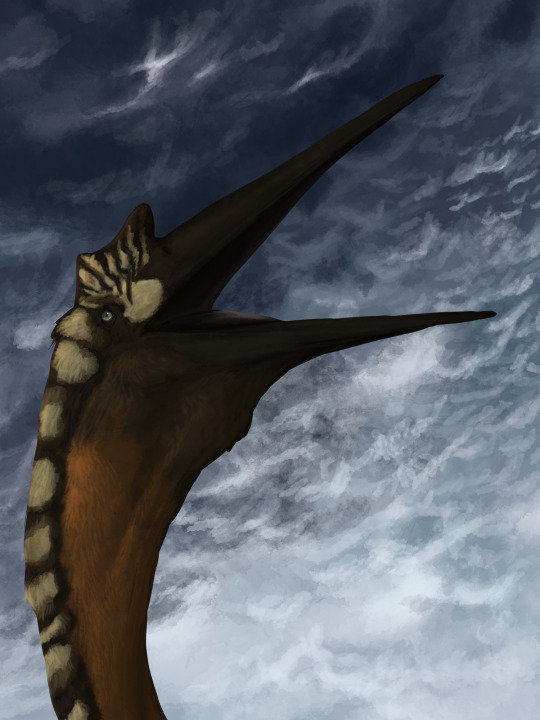
Artfight attack for @jurassicjerks
#paleoart#art#digital art#paleontology#palaeoart#digitalart#quetzalcoatlus#quetzalcoatlus northropi#pterodactyloidea#pterosaur
388 notes
·
View notes
Text

Sketchbook dump + Ben meeting a bunch of different pterosaurs from talks in the discord chat.

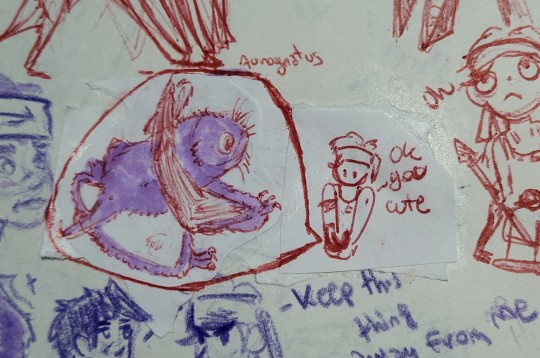
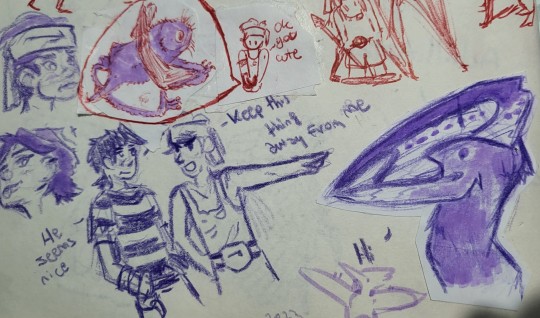
From the biggest ones to the smallest.
#giw sketch#pterosaurs#palaeoblr#camp cretaceous#jwcc#ben pincus#raven (jwcc oc)#camp cretaceous oc#thalassodromeus sethi#quetzalcoatlus northropi#hatzegopteryx#azhdarchid#anurognathus#anurognathus ammoni#sinomacrops#ark sinomacrops#the bottom one I had already done before#i just kept on filling the page
43 notes
·
View notes
Photo

anatolianleo
Quetzalcoatlus northropi model, the largest known flying animal that ever existed.
2 notes
·
View notes
Note
That's an interesting point, did Pterosaurs just die out in Nevverse?
right now its a "maybe?". dragons are the dominant flying creature so at the very least pterosaurs cant exist in the same areas but i am considering some kind of flightless pterosaur in a hard to access environment?
#i have wave a lot of problems with the world still having that nice big mass extinction that killed off nonavian dinosaurs and gave rise to#mammals already so idk. i have sketches somewhere of a flightless azhdarchid but man i already know like#three settings with flightless pterosaurs id feel a bit bad. comic is noncanon tho#that's just flatout a quetzalcoatlus northropi there#asks#anonymous
3 notes
·
View notes
Text

Quetzalcoatlus lawsoni by corvarts. Unlike it's larger relative Q. northropi, which occurs in plains deposits, Q. lawsoni occurs exclusively in alkaline salt lake deposits. This seems to hint at a flamingo-like lifestyle, perhaps having displaced ctenochasmatoids in this regard.
182 notes
·
View notes
Text


#Archovember Day 28 - Quetzalcoatlus lawsoni
While most people now know of the giraffe-sized Quetzalcoatlus northropi, the smaller species deserves much more credit. Most of what we know about the giant Q. northropi comes from lawsoni: northropi is known only from cervical vertebrae and some fragments of wing. We have filled in the rest using the anatomy of the smaller species, Q. lawsoni, of which much more material is known. For years Q. lawsoni wasn’t even named (as it was uncertain whether it was a juvenile or a seperate species). It was just known as Quetzalcoatlus sp. or “the smaller Quetzalcoatlus”. Finally, lawsoni was determined to be an adult and a separate species from northropi, and recieved a name in late 2021.
Even if it wasn’t the size of a giraffe, Quetzalcoatlus lawsoni was still a large, formidable azhdarchid! It had an estimated wingspan of 5 m (16 ft), body length of 3.5 m (11 ft), body mass of 65 kg (143 lb), and a long, sharp, pointed beak. It was native to Late Cretaceous North America, particularly Texas, where it coexisted with the other azhdarchid Wellnhopterus. It has been suggested that Quetzalcoatlus would have filled a similar niche to the modern Marabou Stork: a terrestrial scavenger and predator of small animals that could still fly in a pinch. Having unique fore and hindlimb proportions, Quetzalcoatlus seems adapted to a terrestrial lifestyle, and was even capable of “galloping.”
Alongside fellow azhdarchids Wellnhopterus and its larger cousin Q. northropi, Quetzalcoatlus lawsoni lived alongside the titanosaur Alamosaurus, the ceratopsids Bravoceratops and Torosaurus, the hadrosaurs Kritosaurus and Saurolophinae, the dromaeosaur Saurornitholestes, the troodontid Troodon, and of course, the tyrannosaurid Tyrannosaurus rex. It would have fed on a variety of small mammals, reptiles, and perhaps even birds and their eggs.
981 notes
·
View notes
Photo

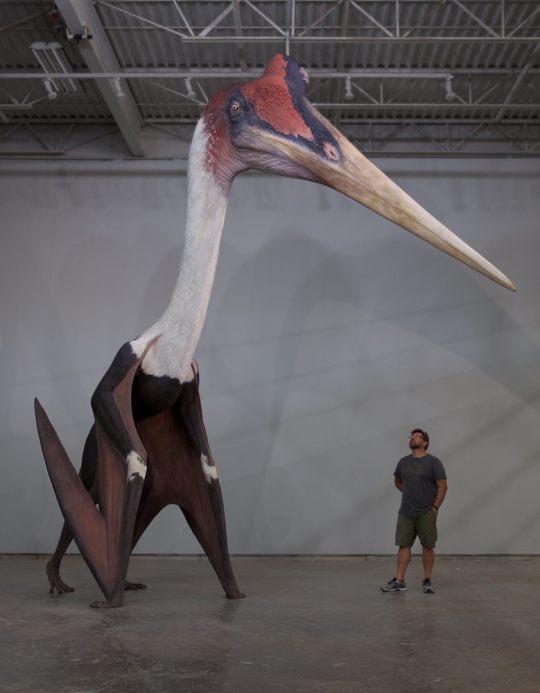

Yes, it was that big... 🐉
Photos of the Quetzalcoatlus northropi life size replica housed in the Field Museum, Chicago. The model was made by @bluerhinostudio
#pterosaur#pterodactyl#not a dinosaur#dinosaur#quetzalcoatlus#natural history museum#fieldmuseum#jurassic world#Jurassic world dominion#sculpture#paleoart#paleontology#science#paleontología#ciencia#paleoarte#museos
2K notes
·
View notes
Note
Hi, I just want to say I love your content and I'd absolutely buy you food and would love more pictures of you. However, im new to your state and I want to learn about the geology of it! Any fun facts you can share?
thank you omggg 🥺🥺 TX is forever the best state imo hehe
however. as for fun facts, i’m more knowledgeable on specifically paleontology so i hope this is interesting… idk if you’re a fan of national parks, but Big Bend NP out in west texas has the most complete and uninterrupted series of fossiliferous strata in the national park system!! specifically, it preserves formations from the early Cretaceous to the Eocene, about 100 million years or so, from 145ma to ~43ma.
another fun fact—quetzalcoatlus northropi, the largest pterosaur and largest flying organism to ever live (dating back 67 million years to the maastrichtian javelina formation iirc), was found out in Big Bend!! in many ways, everything’s bigger in TX :3

^^the dude in question, these things were HUGE. 11-12 meter (~36 feet) wingspan!!!
#my fav fun fact#they also found a trex maxilla out there that i think needs to be reexamined#w all the tyrannosaur papers coming out#and don’t get me started on the fossil flora of west texas…#aguja formation my beloved#talk#paleontology
55 notes
·
View notes
Note
Sorry I’m dumb they’re not birds. They’re the Hatzegopteryx and Quetzalcoatlus northropi
How was I supposed to remember those names anyway😔💔
that type of pterosaur is called an azhdarchid it if helps
(it doesn't! gesundheit.)
48 notes
·
View notes
Text
It Came From The Trash Heap (We Don't Talk About Kholumolumo)
A wastebasket taxon is what happens when species can't be easily classified and instead get hurled into a "catch-all" category.
…But that's not the only kind of taxonomic tangle that can befall a new discovery.
When a scientific name is assigned to a new species, but it isn't given a corresponding formal description and type specimen, it becomes a nomen nudum – a "naked name". Without a proper description and assigned holotype the name isn't valid, and the new species isn't technically accepted by the wider scientific community.
This has even happened to some surprisingly famous names. In the 1920s Velociraptor mongoliensis was briefly given the nomen nudum "Ovoraptor djadochtari" before getting its much more familiar name when it was officially described. Meanwhile the giant pterosaur Quetzalcoatlus northropi was stuck as a nomen nudum for decades, only finally getting a proper published description in 2021.
And there's another particular long-standing nomen nudum that became mildly infamous – "Thotobolosaurus", the "trash heap lizard".
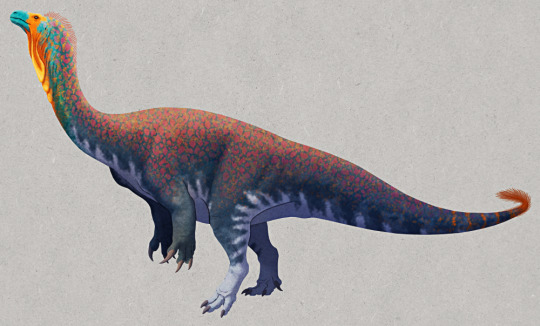
Discovered next to a literal trash pile in the village of Maphutseng in Lesotho, a few scattered and broken bones of this "prosauropod" sauropodomorph dinosaur were first found in 1930. But it wasn't until the mid-1950s that a more extensive bonebed began to be unearthed at the site, and over the next decade over 1000 fossil fragments were collected.
In the mid-1960s the remains were initially classified as belonging to Euskelosaurus browni (which is now considered to be a wastebasket taxon), but just a few years later in 1970 the "Maphutseng Beast" was re-evaluated as a species new to science. It was referred to as "Thotobolosaurus mabeatae" – based on the local name of the discovery site, "Thotobolo ea ‘Ma-Beata" (trash heap of Beata’s mother) – but this name was never actually formally published.
Despite "Thotobolosaurus" being an undescribed nomen nudum it nonetheless went on to be repeatedly referenced in scientific literature over the next few decades, and appeared in several popular dinosaur books (even as recently as 2020!).
In the mid-1990s it was alternatively named "Kholumolumosaurus ellenbergerorum" in a Ph.D. dissertation, with this name derived from the kholumolumo, a reptilian creature in Sotho mythology, and the Ellenberger brothers who worked on the site. But this also didn't count as a formal publication and instead became a second nomen nudum for the species.
Eventually, 90 years after the first bones were found and 50 years after the debut of the name "Thotobolosaurus", this long-neglected sauropodomorph was finally given a proper published full anatomical description in 2020.
And it also got a third name, this time officially valid, based on the second one from the 1990s: Kholumolumo ellenbergerorum.
For something associated with trash for so long, Kholumolumo is actually now one of the most completely-known prosauropods. At least five different individuals were present in the collected fossil material, possibly as many as ten, and between them most of the full skeleton is represented – with the exception of the skulls, which are only known from a couple of small fragments.
We now know Kholumolumo was rather heavily-built, with chunky limb bones and unusually short shinbones. It would have been one of the biggest animals around in the Late Triassic (~210 million years ago), measuring at least 9m long (~30') and weighing around 1.7 tonnes (1.9 US tons), but despite its size it seems to have still been bipedal.
Due to the highly disarticulated nature of the bones the fossil site may have been a "bone accumulation area", a place where dismembered bits and pieces of different carcasses were regularly carried to be eaten by a predator or scavenger – essentially a trash heap, fittingly enough. A couple of "rauisuchian" teeth have actually been found among the remains, which might indicate what was chomping on these particular Kholumolumo.
———
Nix Illustration | Tumblr | Twitter | Patreon
#it came from the wastebasket#nomen nudum#taxonomy#kholumolumo#thotobolosaurus#prosauropod#massopoda#sauropodomorpha#dinosaur#paleontology#art#science illustration#paleoart#palaeoblr
290 notes
·
View notes
Text
fuck, what i wouldn't give to have a little domesticated Dromaeosaur running around the house with the zoomies, just a fuzzy little dude
honestly, id kill to move a lotta prehistoric species to the present, bring back mammoths, bring back sauropods and marine reptiles and massive trees and pterosaur
especially pterosaurs, if you could get the big ones like Pteranodon Longiceps, or Quetzalcoatlus Northropi, please please please
i dunno how they'd fit into a modern ecosystem, probably need to bring back some ancient plants, too, and probably move out a couple mammals. . .
hmm
116 notes
·
View notes
Text
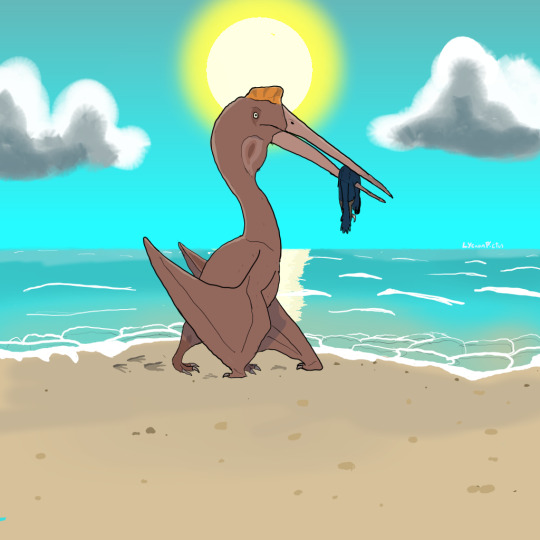
Snack At The Beach
A Quetzalcoatlus northropi feasting on a juvenile troodontid at the beach, in Texas 66 MYA.
8 notes
·
View notes
Text
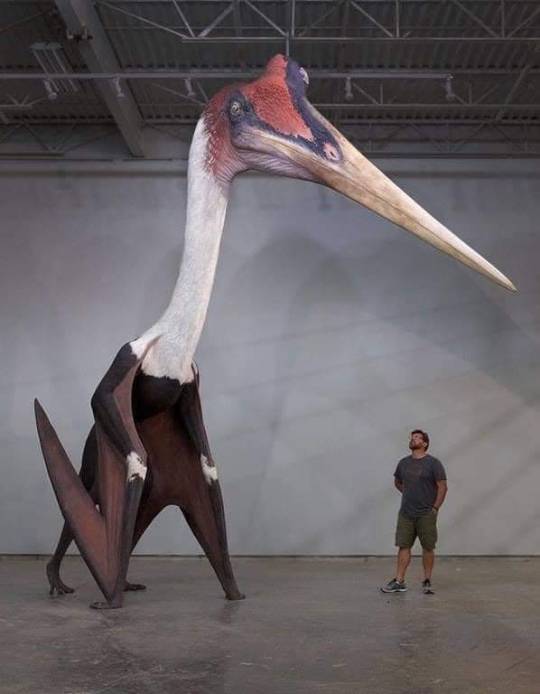
Quetzalcoatlus northropi model, the largest known flying animal that ever existed.
145 notes
·
View notes
Text
Y'know for my ongoing RWBY fic I've made a lot of one off original Creatures of Grimm (To say nothing of the other fics in the series) and it's been fun.
But somehow I haven't made a pterosaur....well, as it happens for an upcoming chapter I need a big flying beastie.
Looks like it's time for Quetzalcoatlus northropi to get the Grimm treatment.
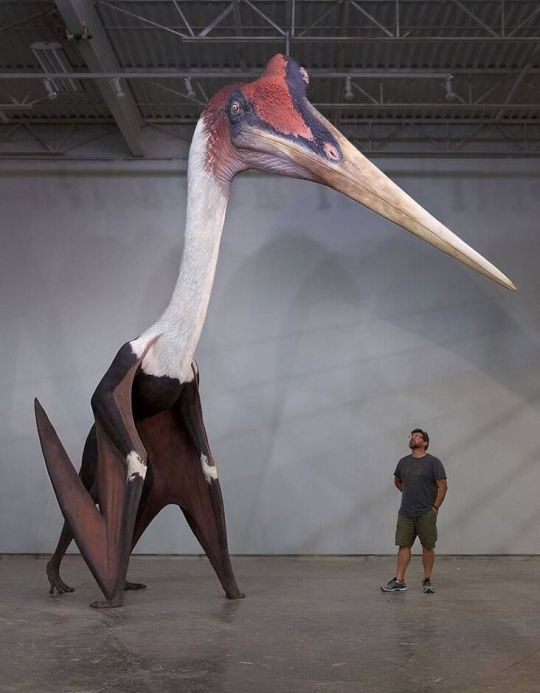
Because a sixteen foot tall package of winged bastard is a pretty solid basis.
#writeblr#writer things#RWBY#rwby fanfiction#creatures of grimm#Kaiju#pterosaur#dinosaur#quetzalcoatlus#giant monsters#Monster of the week
13 notes
·
View notes
Text
I nerd out about my favorite dinosaur (the Quetzalcoatlus northropi) so much that my phone has started correcting some of my keyboard smashes to it 😭
5 notes
·
View notes
Text
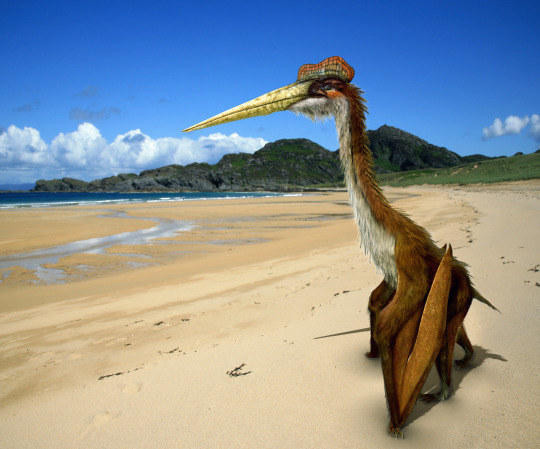



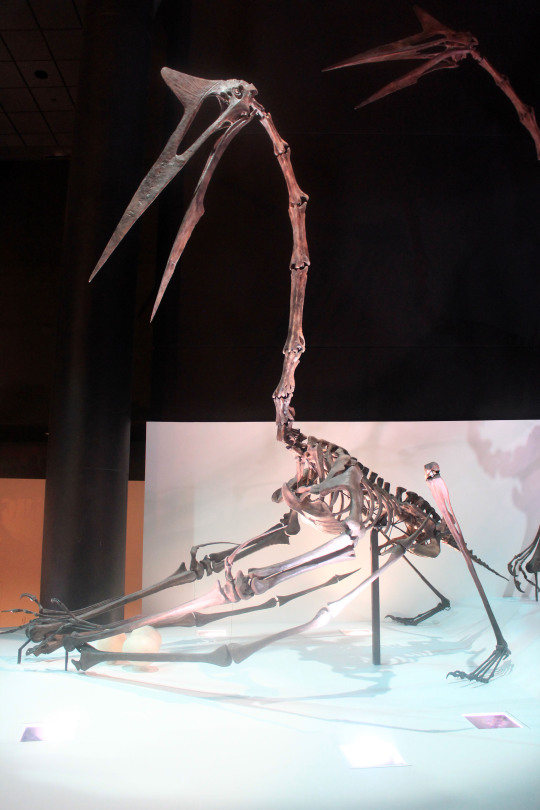

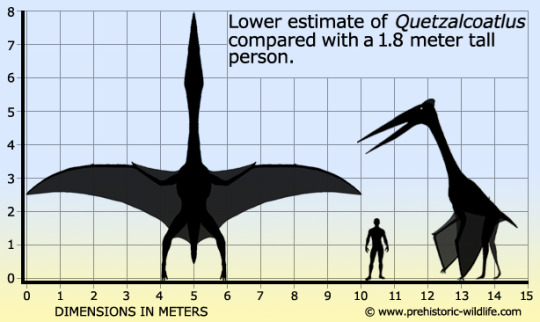
Quetzalcoatlus
(temporal range: 68-66 mio. years ago)
[text from the Wikipedia article, see also link above]
Quetzalcoatlus /kɛtsəlkoʊˈætləs/ is a genus of azdarchid pterosaur known from the Late Cretaceous Maastrichtian age of North America. Its two confirmed species, along with other azdarchids, were the largest known flying animals of all time. Azhdarchidae is a family of advanced toothless pterosaurs with unusually long, stiffened necks and giant wingspans. Its name comes from the Aztec feathered serpent god Quetzalcoatl. The type species is Q. northropi, named by Douglas Lawson in 1975. The genus also includes the smaller species Q. lawsoni, which was known for many years as an unnamed species, before being named by Brian Andres and Wann Langston Jr. (posthumously) in 2021.
17 notes
·
View notes